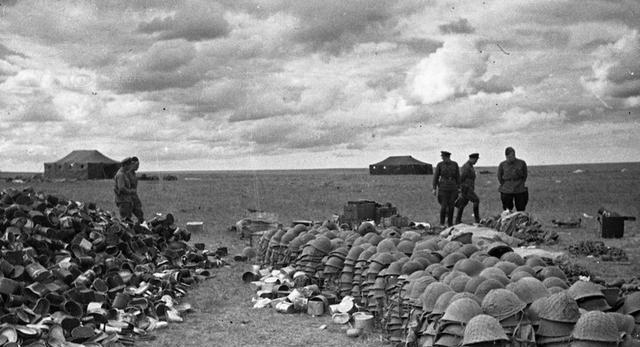The Battle of Nomonhan, or Battle of the Halaha River, also known as the Nomonkan Incident, was a battle fought in the Far East by Japan and the Soviet Union in the early years of World War II.

The war took place in 1939 on the border between Manchuria and Mongolia at the time, Nomonhan. The armies of Japan and Russia fought on behalf of "Puppet Manchukuo" and "Mongolia" respectively (the Soviet-Mongolian coalition led by Marshal Zhukov of the Soviet Union and Marshal Chobasan of the Mongolian People's Republic), but Japan and Russia did not formally declare war on each other. The war ended with the defeat of the Japanese Kwantung Army. Japan and Russia maintained a state of peace in World War II until August 6, 1945, when the Soviet Union declared war on Japan and attacked the puppet state of Manchukuo on August 8, after the Americans dropped the atomic bomb on Hiroshima, Japan.
The Battle of Nomonhan, which began with the ownership of the triangular area west of Nomonhan by the invading Japanese army and the Outer Mongolian army, to the Halaha River, finally led to the battle. The outcome of the campaign ended in the crushing defeat of the Japanese Kwantung Army.
In mid-August 1939, the situation in Europe changed dramatically. The Soviet Union and Japan also stepped up diplomatic negotiations after the end of August. Although the Soviets won the battle in the Far East, they had no intention of expanding the results. The two sides ceased fire on 16 September, ending the clashes with Japan backing down and acknowledging existing borders. On June 9, 1940, the Soviet Union and Japan formally concluded an agreement.
The Battle of Nomonhan lasted 135 days. The two sides invested more than 200,000 soldiers, more than 500 cannons, 900 aircraft, thousands of tanks and armored vehicles, and more than 60,000 deaths.
In the Battle of Nomonhan, Zhukov commanded the armored forces to win the first major victory in mobile warfare, and was awarded the title of "Hero of the Soviet Union". The Soviet government, informed of the Japanese southward advance, including that of the spy Richard Zorg, should not have launched another offensive against Siberia immediately. The Soviets were then transferred to Europe; In December 1941, Zhukov again commanded the Siberian forces to successfully launch a counter-attack and defeat the Germans in the Defense of Moscow.
After the war, the Military Medical Department of the 6th Army announced that the number of Japanese casualties was 7696, the number of wounded was 8647, the number of unaccounted for was 1021, and the total number of troops dispatched was 58925. There is a saying that there are some doubts about this number, the number of wounded is too close to the number of dead, if the number of dead is added to the number of missing, the two are almost equal, and the number of dead and missing is more than the number of wounded. Some people have questioned the accuracy of the Japanese military data. But this argument is untenable. The number of wounded is much greater than the number of deaths, and the roughly 3:1 situation applies only to defeat warfare, and this law does not hold for annihilation warfare. The annihilation war is generally close to the number of casualties or the number of deaths is greater than the number of wounded, and the Soviet army in the Battle of Nomonkan is obviously a certain degree of annihilation war against the weak Japanese army, so the data of the Japanese 6th Army Military Medical Department is very reasonable and in line with the actual situation. Of the more than 58,000 Japanese troops, only more than 25,000 people actually participated in the battle, with the 23rd Division as the core, and the rest of the troops were only transferred after August 29 at the end of the war.